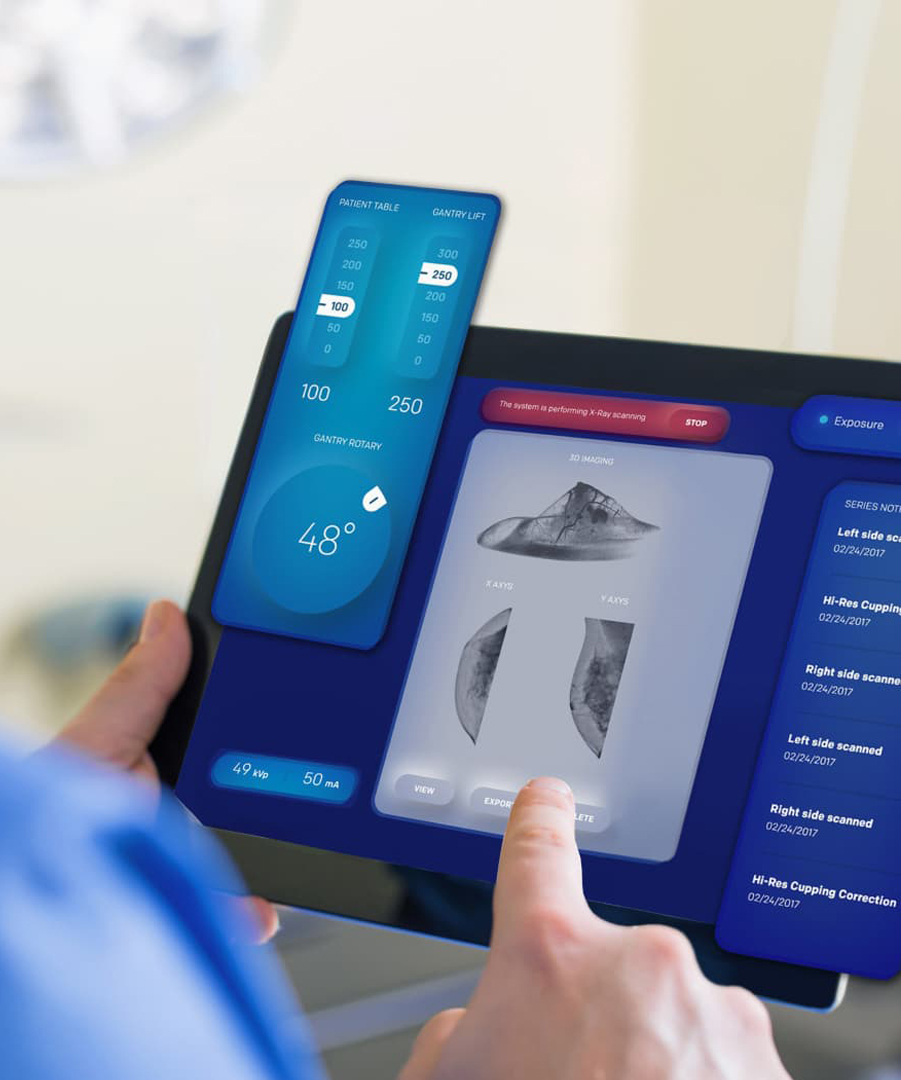


يُعدّ جهاز مراقبة الحرائق عنصرًا أساسيًا في مكافحة الحرائق بشاحنات إطفاء HOWO، ويؤثر أداؤه بشكل مباشر على كفاءة إخماد الحرائق والسلامة التشغيلية. لضمان استقرار التشغيل في حالات الطوارئ، تُعد الصيانة اليومية المنهجية والعلمية أمرًا أساسيًا. يوضح هذا الدليل نقاط الصيانة الرئيسية لـ شاحنة إطفاء هوو الشاشات، مما يساعد المستخدمين على إطالة عمر المعدات وضمان فعالية مكافحة الحرائق المثلى.
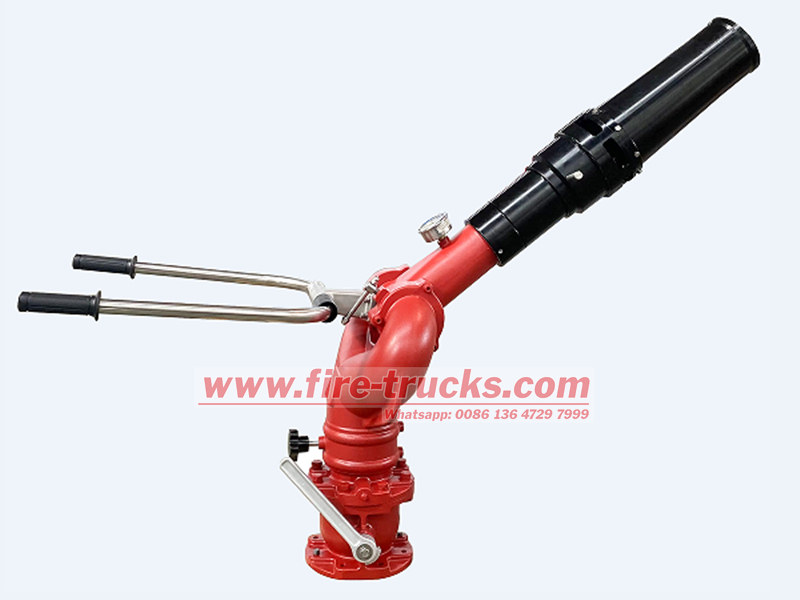
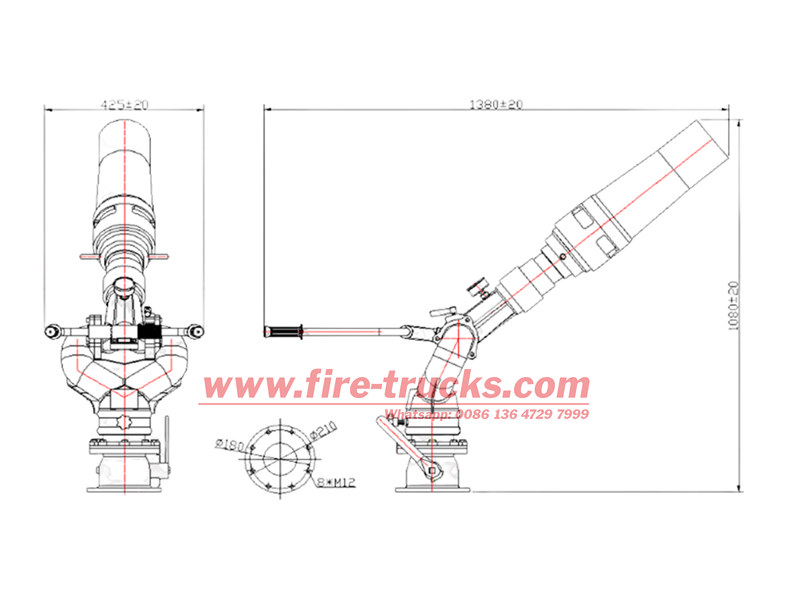
1. التنظيف المنتظم: منع تراكم الأوساخ
تتعرض شاشات مراقبة الحرائق في شاحنة إطفاء صهريج HOWO بشكل متكرر لبيئات إطفاء قاسية، مما يجعلها عرضة لتراكم الغبار والشحوم والترسبات الكلسية، مما قد يسد الفوهات أو يعيق الحركة الميكانيكية. امسح السطح الخارجي للشاشة بانتظام بقطعة قماش ناعمة ومنظف معتدل، مع تجنب الأحماض أو القلويات القوية التي قد تُسبب تآكل المعادن أو الأختام. بالنسبة للممرات الداخلية، اشطفها بماء نظيف منخفض الضغط بشكل دوري لمنع تراكم الرواسب. بعد التنظيف، تأكد من جفاف جميع الأجزاء لتجنب الصدأ الناتج عن الرطوبة.
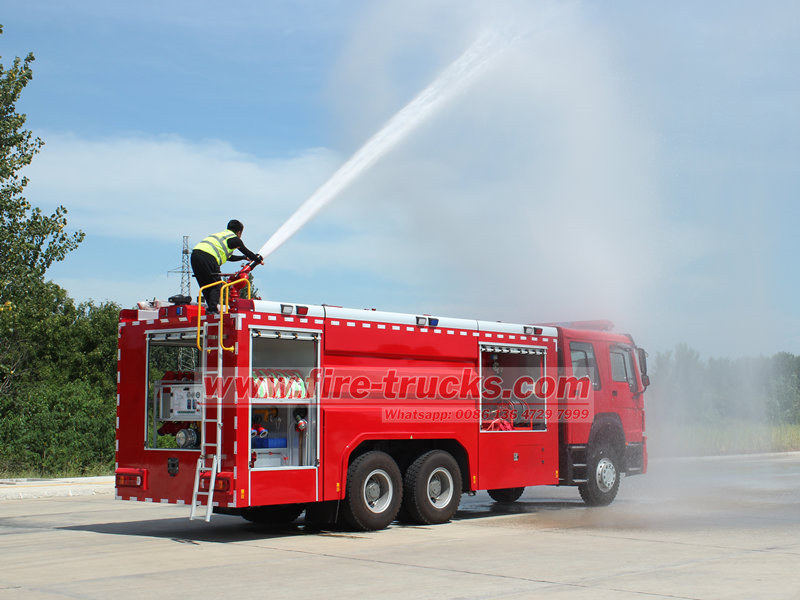
2. تزييت المكونات الرئيسية: ضمان التشغيل السلس
يجب أن تظل آليات الدوران وصمامات الضبط والمفاصل في جهاز المراقبة مرنة للحفاظ على زوايا الرش والتحكم في الضغط بشكل صحيح. استخدم زيوت تشحيم متخصصة (مثل الشحوم المصنوعة من السيليكون أو الزيوت المقاومة للحرارة العالية) على الأجزاء المتحركة، وخاصةً محامل الدوران ومقابض الضبط. يعتمد تكرار التشحيم على الاستخدام - فحوصات شهرية للمركبات المستخدمة بكثرة، وصيانة ربع سنوية للمركبات الأقل استخدامًا. تجنب الإفراط في التشحيم، لأن الشحوم الزائدة قد تجذب الغبار وتؤثر سلبًا على الأداء.
3. عمليات التفتيش الشاملة: الكشف المبكر عن الأعطال المحتملة
قبل وبعد كل عملية، قم بإجراء فحوصات أساسية على شاشة شاحنة إطفاء الحرائق HOWO، بما في ذلك:
• الفوهة: تحقق من عدم وجود تشوه أو انسداد لضمان توزيع الماء بالتساوي.
• الأنابيب والصمامات: افحصها بحثًا عن التسريبات أو الشقوق أو الوصلات الفضفاضة، وقم بإحكام جميع البراغي والوصلات السريعة.
• الأختام (حلقات O، الحشيات): استبدلها إذا أصبحت مهترئة أو قديمة لمنع فقدان الضغط.
• المكونات الكهربائية (للشاشات التي يتم التحكم فيها عن بعد): اختبر دوائر التحكم والمحركات لمنع حدوث ماس كهربائي بسبب الرطوبة.
تؤدي عمليات التفتيش المنتظمة إلى تقليل الأعطال غير المتوقعة بشكل كبير، مما يحافظ على جاهزية الشاشة للعمل.
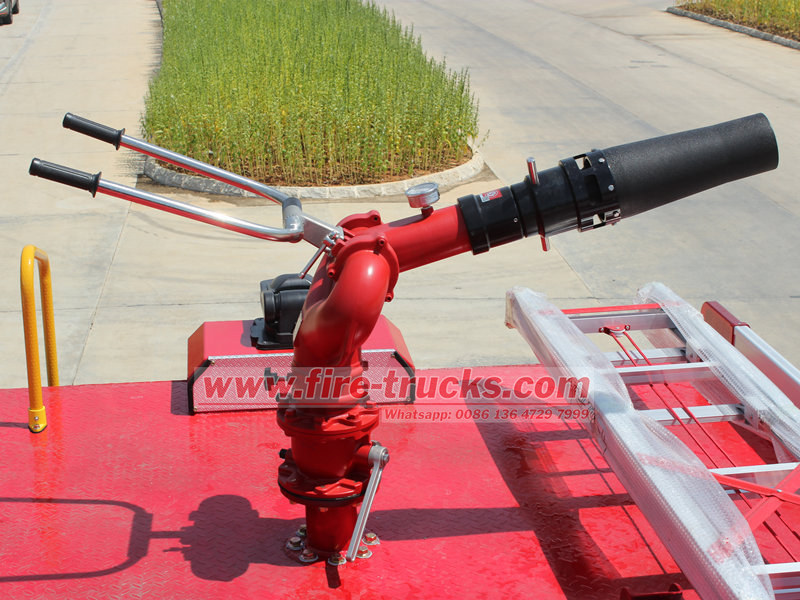
4. منع الصدأ والتآكل: إطالة عمر المعدات
نظراً لتعرض أجهزة مراقبة الحرائق المستمر للماء ومواد إطفاء الحرائق الكيميائية، فإن أجزائها المعدنية معرضة للتآكل. على الرغم من أن أجهزة مراقبة الحرائق تُصنع عادةً من الفولاذ المقاوم للصدأ أو المواد المجلفنة، يُرجى فحص طبقة الطلاء المضادة للتآكل بانتظام. في حال تقشر الطلاء أو ظهور صدأ، قم بصنفرة المنطقة ثم ضع طلاءً مقاوماً للصدأ ومقاوماً لدرجات الحرارة العالية. بالنسبة للمفاصل الحساسة (الشفاه، والوصلات الملولبة)، ضع شحماً مضاداً للصدأ لمنع الالتصاق. في المناطق الساحلية أو الرطبة، زد من وتيرة الفحص وعزز إجراءات الحماية.
5. اختبار الأداء والمعايرة: ضمان دقة مكافحة الحرائق
تؤثر مسافة وزاوية رشّ جهاز المراقبة بشكل مباشر على كفاءة مكافحة الحرائق. اختبر أجهزة مراقبة سيارات الإطفاء HOWO بانتظام للتأكد من:
• أداء الرش: التحقق من المدى الأقصى واستقرار تيار المياه.
• ضبط الزاوية: تأكد من دقة الحركات الأفقية والرأسية؛ واختبار استجابة الإشارة للنماذج البعيدة.
• اختبار الضغط: تأكد من عدم وجود تسربات أو اهتزازات غير طبيعية عند الضغط المقدر.
إذا تقلصت مسافة الرش أو انحرفت زواياه، فاضبط الفوهة أو افحص ضغط المضخة. في المناخات الباردة، اختبر إجراءات منع التجمد لمنع التجمد.
6. التخزين والحماية: تجنب التلف أثناء عدم النشاط
عند توقف سيارة الإطفاء عن العمل مؤقتًا، يُعد التخزين السليم أمرًا بالغ الأهمية. تجنب التعرض لأشعة الشمس أو المطر لفترات طويلة؛ استخدم غطاءً واقيًا إن أمكن. للتخزين طويل الأمد، صرّف جميع المياه من جهاز المراقبة والأنابيب لمنع تلفها بسبب التجمد. شغّل جهاز المراقبة وأدر آلياته بشكل دوري لمنع التعطل بسبب عدم الاستخدام.
يُعدّ جهاز مراقبة شاحنات الإطفاء HOWO ركيزةً أساسيةً لعمليات مكافحة الحرائق، وتُحدد موثوقيته نجاح المهمة. من خلال التنظيف والتشحيم والفحص والوقاية من الصدأ والاختبار والتخزين المناسبين، يُمكن للمستخدمين تحسين متانته وأدائه بشكل ملحوظ. يجب على إدارات الإطفاء وضع جداول صيانة مُفصّلة وتدريب الموظفين على أساليب الصيانة الصحيحة لضمان أعلى درجات الجاهزية لأي حالة طوارئ.
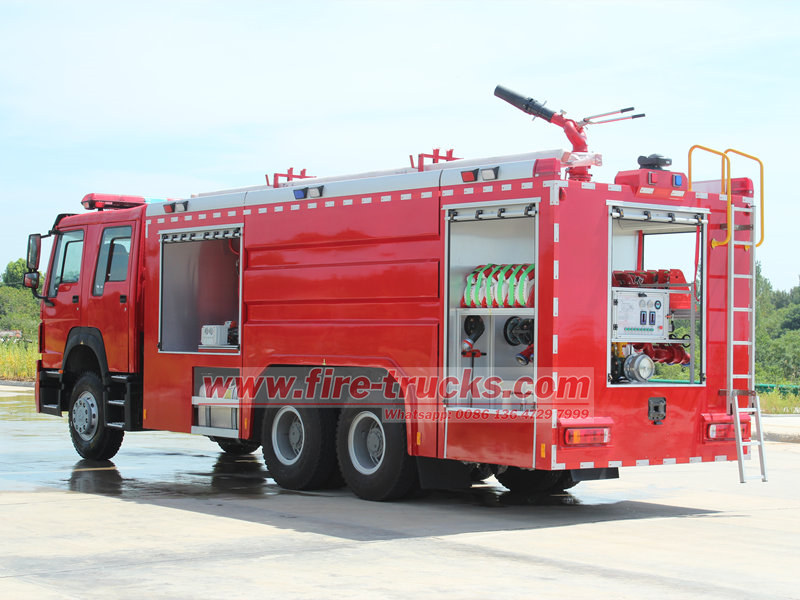
قد تكون مهتمًا بالمعلومات التالية